Part 5 : The Scarred Landscape
Curated by Josh Siegel, Curator, The Museum of Modern Art
CINEMA FOR ALL PAVILION AT THE CHIANG RAI INTERNATIONAL ART MUSEUM (CIAM)
ที่หอศิลป์ร่วมสมัยเมืองเชียงราย
PART 5
APRIL 2ND, 2024 - APRIL 30TH 2024
“The Scarred Landscape”
Cauleen Smith & the Eternals, Songs for Earth and Folk
2013, USA, 11mins ปี 2556, อเมริกา, 11 นาที
Bouchra Khalili, Garden Conversation
2014, Morocco, 18mins ปี 2557, โมร็อกโก, 18 นาที
Anocha Suwichakornpong and Tulapop Saenjaroen, Nightfall
2016, Thailand/Singapore, 16mins ปี 2559, ไทย/สิงคโปร์, 16 นาที
Salomé Jashi, Tower
2018, Georgia, 4mins ปี 2561, จอร์เจีย, 4 นาที
Thao Nguyen Phan, Becoming Alluvium
2019, Vietnam/Spain, 16mins ปี 2562, เวียดนาม/สเปน, 16 นาที
-
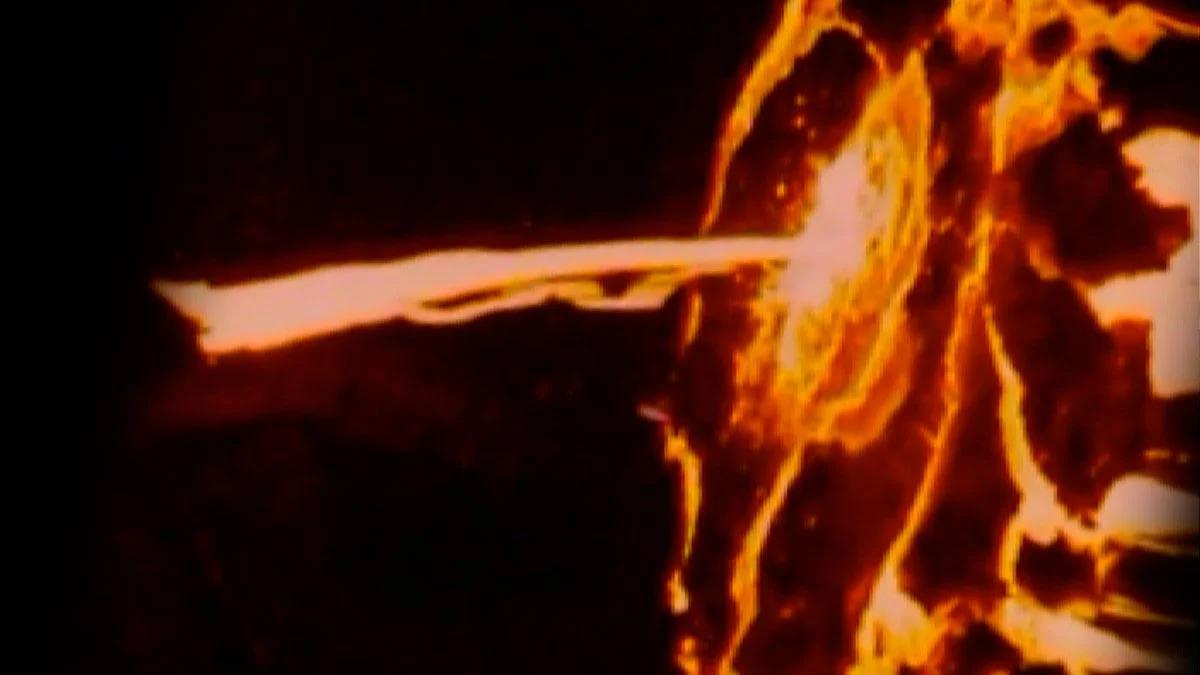
Cauleen Smith & the Eternals, Songs for Earth and Folk
2013, USA, 11mins
ปี 2556, อเมริกา, 11 นาที
-
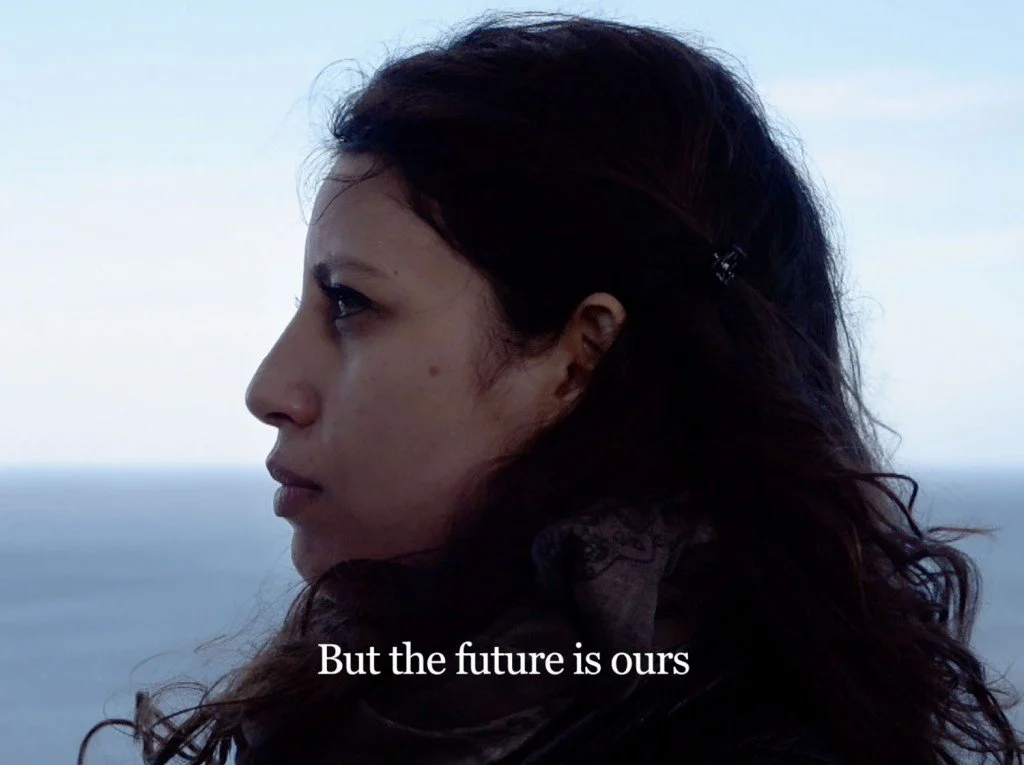
Bouchra Khalili, Garden Conversation
2014, Morocco, 18mins
ปี 2557, ประเทศโมร็อกโก, 18 นาที -
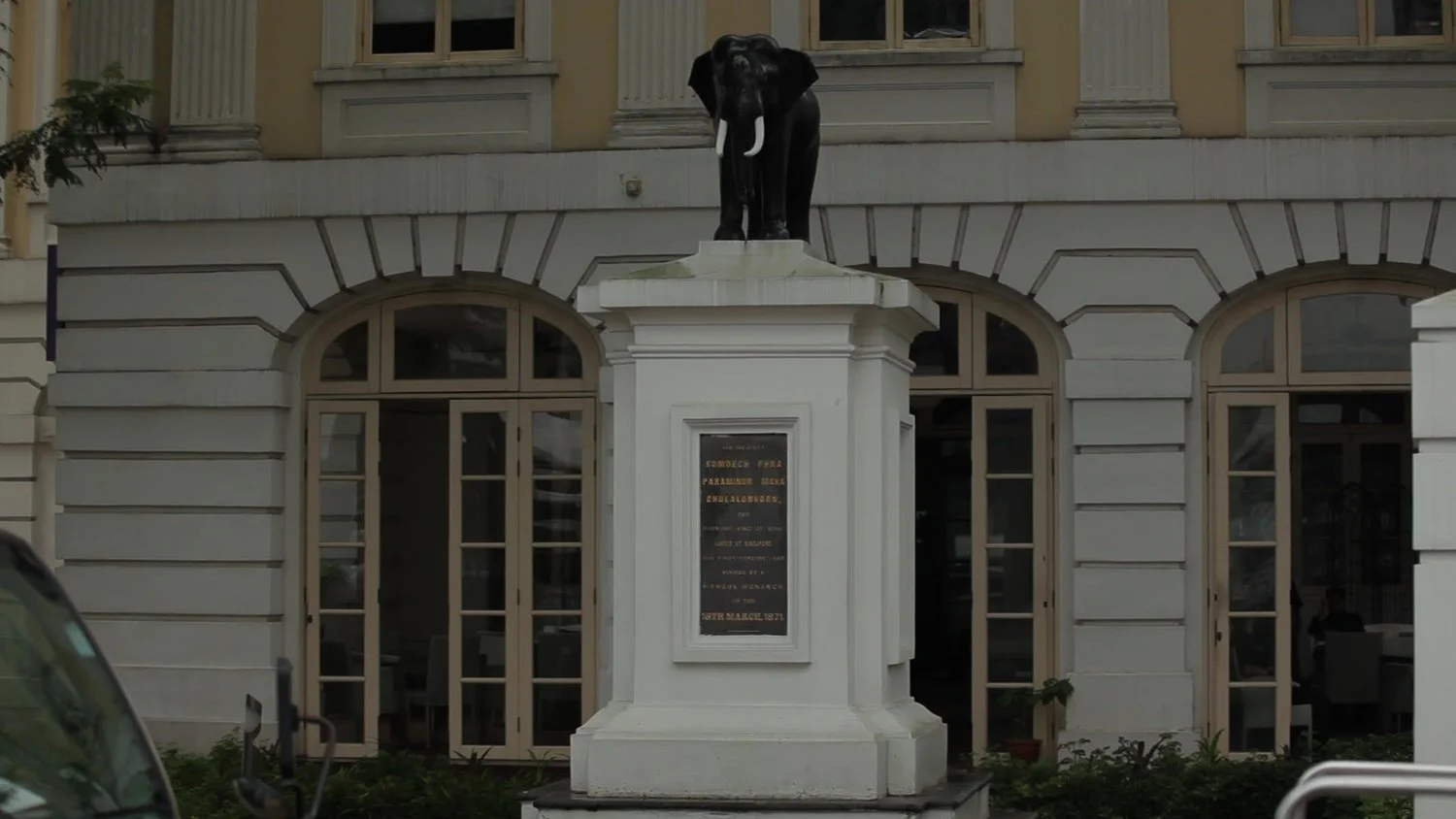
Anocha Suwichakornpong and Tulapop Saenjaroen, Nightfall
2016, Thailand/Singapore, 16mins
ปี 2559, ประเทศไทย/สิงคโปร์, 16 นาที
-

Salomé Jashi, Tower
2018, Georgia, 4mins
ปี 2561, ประเทศจอร์เจีย, 4 นาที -

Thao Nguyen Phan, Becoming Alluvium
2019, Vietnam/Spain, 16mins
ปี 2562, ประเทศเวียดนาม/สเปน, 16 นาที
Part 4 : Doppelgängers and Body Doubles
Curated by Josh Siegel, Curator, The Museum of Modern Art
CINEMA FOR ALL PAVILION AT THE CHIANG RAI INTERNATIONAL ART MUSEUM (CIAM)
ที่หอศิลป์ร่วมสมัยเมืองเชียงราย
PART 4
MARCH 8TH, 2024 - APRIL 1ST, 2024
“Doppelgängers and Body Doubles”
Mary Kunuk, Aqtuqsi (The Nightmare)
1996, Canada, 5mins ปี 2539, ประเทศแคนาดา, 5 นาที
Tan Pin Pin, 9 August
2006, Singapore, 7mins ปี 2549, ประเทศสิงคโปร์, 7 นาที
Dineo Seshee Bopape, is i am sky
2013, South Africa, 18mins ปี 2556, ประเทศแอฟริกาใต้, 18 นาที
María Rojas Arias, Imprimir-Comprimir
2014, Colombia, 1min ปี 2557, ประเทศโคลัมเบีย, 1 นาที
Danech San, A Million Years
2018, Cambodia, 21mins ปี 2557, ประเทศกัมพูชา, 21 นาที
DOPPELGÄNGERS AND BODY DOUBLES
We all cast a shadow. Is that a comfort or a curse? Does it reassure us of our place in the world, the corporeal shade we trace on the earth, the mark we make? Or is it rather a reminder of the ephemeral nature of all living things, the sun and moon as they rise and set registering the waxing and waning of our own fleeting existence? Every culture and religion in the world believes in ghosts of some sort. These ghosts may not be the disembodied spirits of Victorian post-mortem photography or an animist faith in the soul of a tree or a cloud pattern, a flame or a spell. But even the most skeptical and rationally minded of us nonetheless has an imagination that can never be fully harnessed, one that inevitably, even thrillingly, plunges us into the realm of the mysterious, the uncanny, and the inexplicable.
Cinema, too, occupies this nebulous world between dark and light, the visible and the invisible, dreaming and wakefulness, self and other, self and mirror image, double, or dopplëganger. The selection of films in this program, which span more than a century of cinema as well as myriad continents and cultures, was inspired by Apichtapong Weerasethakul’s Solarium (2023). Presented in a classroom at the Bann Mae Ma School in Chiangå San, this double-projection installation takes as its own inspiration a Thai film that has haunted Weerasethakul since childhood: The Hollow-eyed Ghost (1981). The installation comprises moving images cast onto and reflected through a floating semi-transparent glass screen. We who cross the path of these projected images become unwitting participants in a strange phantasmagoric staging, shadowy figures in the crowd. We become disoriented, unmoored, and estranged from ourselves, not knowing where our bodies leave off and our reflections begin, a figment of our own imaginations. We become immaterial.
Now, as you enter this spectral world of shadow-spirits, be sure to carve out the time and space in which to clear your mind. Dispel all mundane care and quotidian concern (start by putting down your phones!) and give thought to the play of these films on your senses. Give these films their proper due, and as you step back outside, into the sunlight, you will find that your eyes and ears, maybe even your whole body, must slowly adjust to the contours of a different reality. Perhaps then you too will have become, unwittingly, a stranger to yourself.
–Josh Siegel, Curator, The Museum of Modern Art
-

Mary Kunuk, Aqtuqsi (The Nightmare)
1996, Canada, 5mins
ปี 2539, ประเทศแคนาดา, 5 นาที -
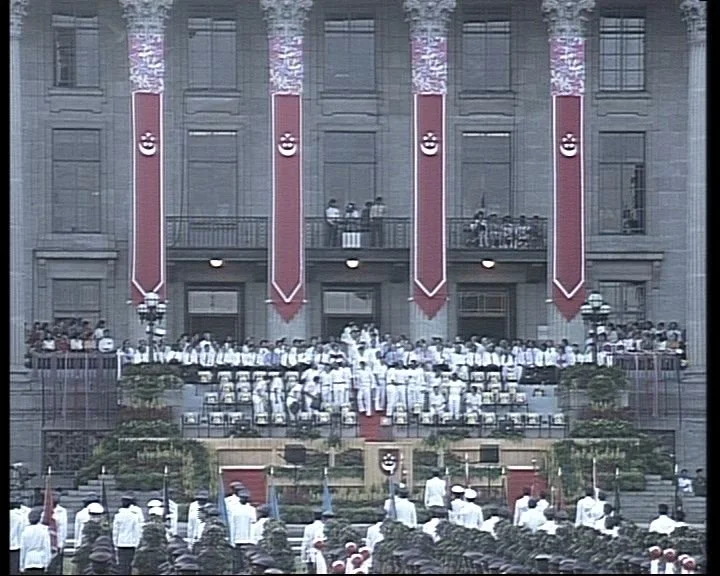
Tan Pin Pin, 9 August
2006, Singapore, 7mins
ปี 2549, ประเทศสิงคโปร์, 7 นาที -
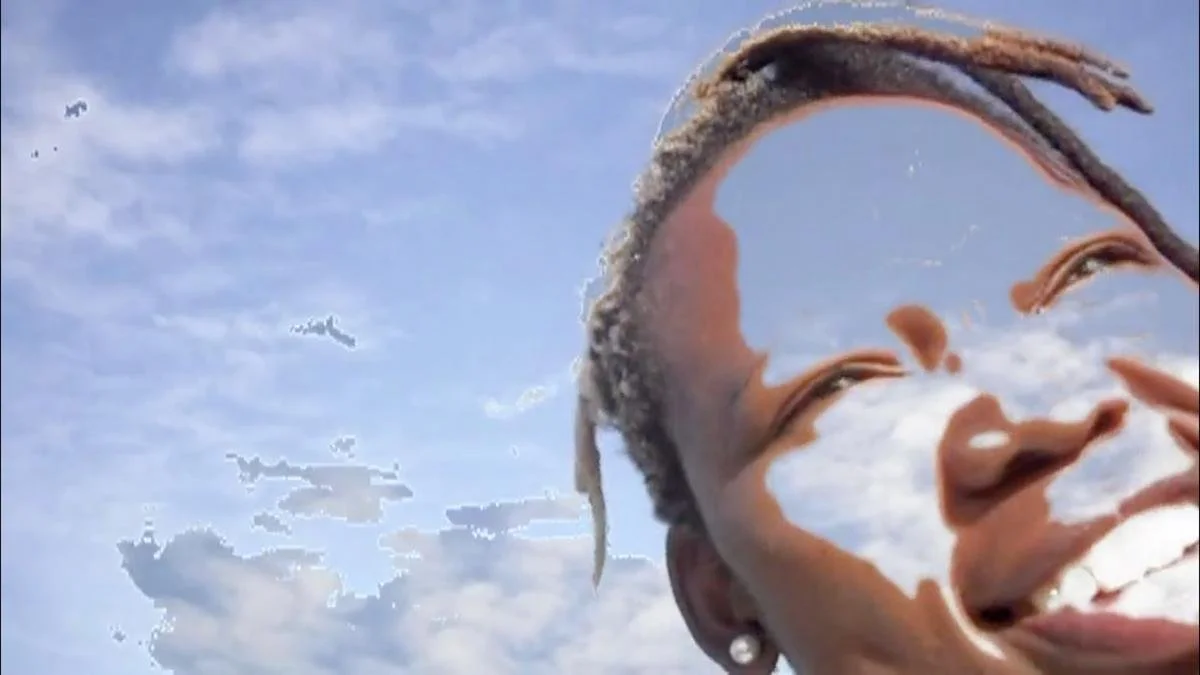
Dineo Seshee Bopape, is i am sky
2013, South Africa, 18mins
ปี 2556, ประเทศแอฟริกาใต้, 18 นาที
-
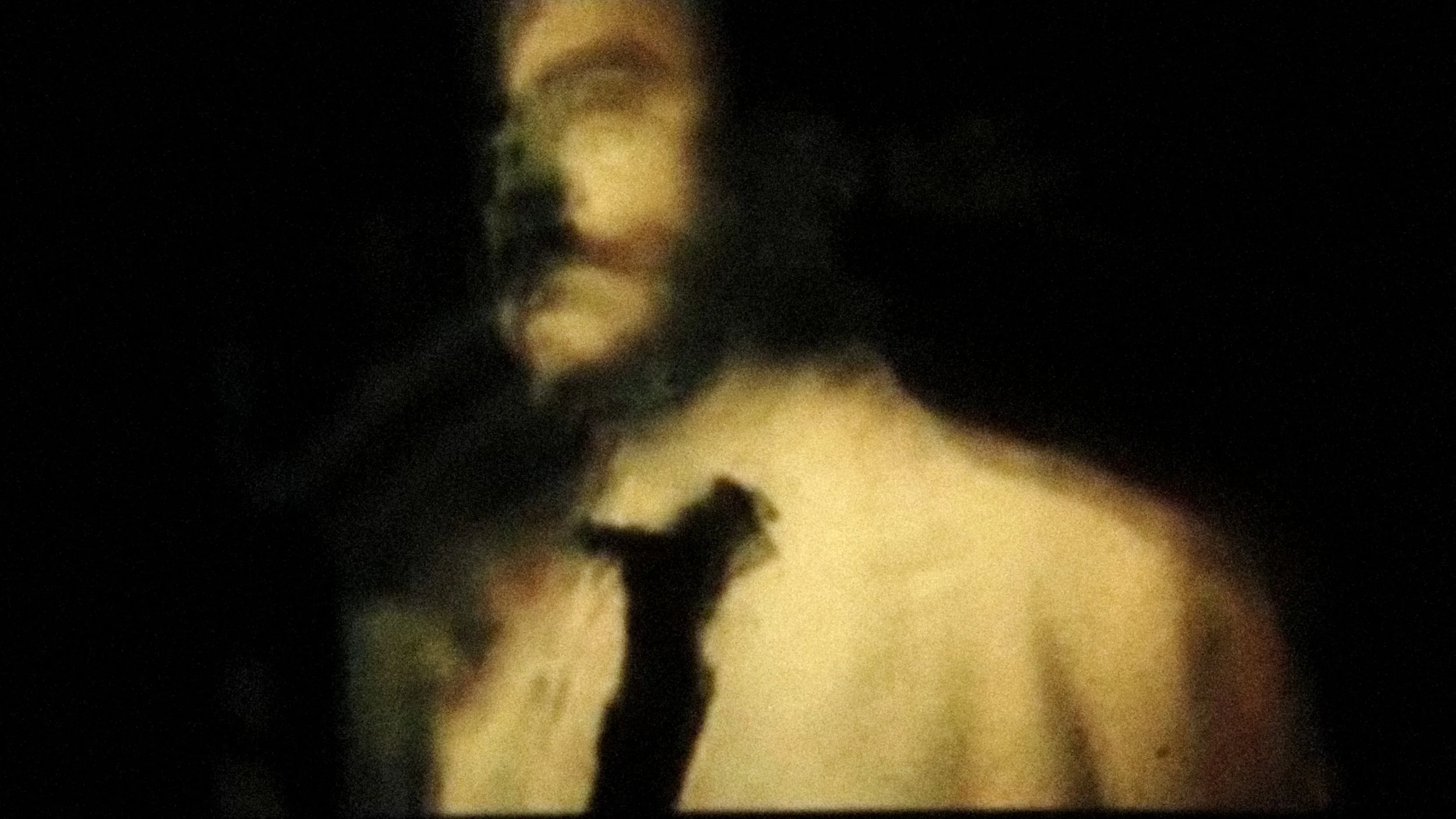
María Rojas Arias, Imprimir-Comprimir
2014, Colombia, 1min
ปี 2557, ประเทศโคลัมเบีย, 1 นาที -

Danech San, A Million Years
2018, Cambodia, 21mins
ปี 2561, ประเทศกัมพูชา, 21 นาที
Part 3 : Haikus
Curated by Josh Siegel, Curator, The Museum of Modern Art
CINEMA FOR ALL PAVILION AT BAN MAE MA SCHOOL
ที่โรงเรียนบ้านแม่มะ
PART 3
FEBRUARY 8TH, 2024 - MARCH 5TH, 2024
“Haikus: Phantom”
Margaret Tait, Colour Poems,
1974, UK, 12mins ปี 2517, สหราชอาณาจักร, 12 นาที
José Val del Omar, Variations On A Pomegranate
1975, Spain, 3mins ปี 2518, ประเทศสเปน, 3 นาที
Chris Marker, Three Video Haiku
1994, France, 4mins ปี 2537, ประเทศฝรั่งเศส, 4 นาที
John Torres, Muse
2011, the Philippines, 2mins ปี 2554, ฟิลิปปินส์, 2 นาที
Jacquelyne Mills, Leaves
2013, Canada, 5mins ปี 2556, ประเทศแคนาดา, 5 นาที
Armand Tufenkian, Robert Schaller, Curt Heiner, in lightning Agnes
2014, USA, 2min ปี 2557, สหรัฐอเมริกา, 2 นาที
Apichatpong Weerasethakul, Video Diary: Haiku, 2009
2017, Thailand, 2mins ปี 2560, ประเทศไทย, 2 นาที
Kaori Oda, Tune
2018, Japan, 6mins ปี 2561, ประเทศญี่ปุ่น, 6 นาที
Courtney Stephens, Iris Season
2020, USA, 3min ปี 2563, สหรัฐอเมริกา, 3 นาที
HAIKU FILMS
“When composing a verse let there not be a hair's breath separating your mind from what you write; composition of a poem must be done in an instant, like a woodcutter felling a huge tree or a swordsman leaping at a dangerous enemy.”
–Matsuo Bashō (1644-1694)
The classic haiku form that originated in Japan is a fixed verse comprising 17 sound units. Impressionistic yet distilled, colloquial yet elusive, quotidian yet eternal, it is a poem that seeks to capture a fleeting moment or glimpse, and in that suspension of time evoke the ephemerality of all living beings and all lived experience. What we call “lyricism” in cinema, the Homeric epic or the Dadaist jape, the city symphonies of the French avant-garde or the dialectics of Soviet montage, is an attempt in filmmaking to emulate what we think of as the essential qualities of poetry and music: a concern with form and rhythm, sound and meaning, and a sharpening of the senses. “Cinema is an art of movement,” the British author (and movie critic) Graham Greene once observed. “Montage ... is really only a method of balancing speed of movement with speed of thought and idea.” Just as Matsuo Bashō likened the good poet to a craftsman or warrior who expertly narrows the breadth between thought and act, Greene—who was as brilliant a writer of short stories as he was of novels-–wrote admiringly of the short film form as a genre unto itself, one that in skilled hands is executed swiftly, cleanly, and decisively. As you watch the “haiku” films in this program-–a rich and varied lot, to be sure–consider the momentousness, precision, and cinematic movement of this sentence from Greene’s 1936 novel Gun for Hire: “His eyes, like little concealed cameras, photographed the room instantaneously; the desk, the easy chair, the map on the wall, the door to the bedroom behind, the wide window above the bright cold Christmas street.”
–Josh Siegel, Curator, The Museum of Modern Art
-
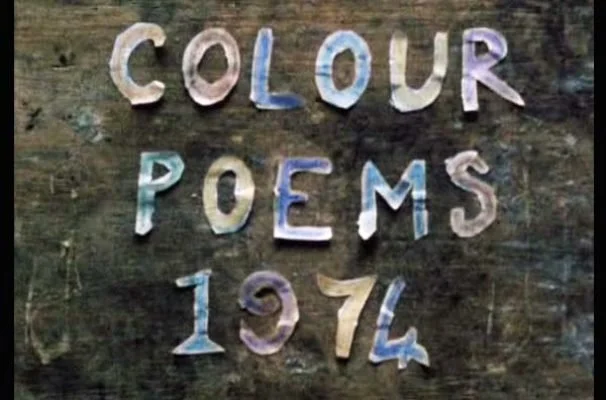
Margaret Tait, Colour Poems
1974, UK, 12mins
ปี 2517, สหราชอาณาจักร, 12 นาที -

José Val del Omar, Variations On A Pomegranate
1975, Spain, 3mins
ปี 2518, ประเทศสเปน, 3 นาที -

Chris Marker, Three Video Haiku
1994, France, 4mins
ปี 2537, ประเทศฝรั่งเศส, 4 นาที
-

John Torres, Muse
2011, the Philippines, 2mins
ปี 2554, ฟิลิปปินส์, 2 นาที -
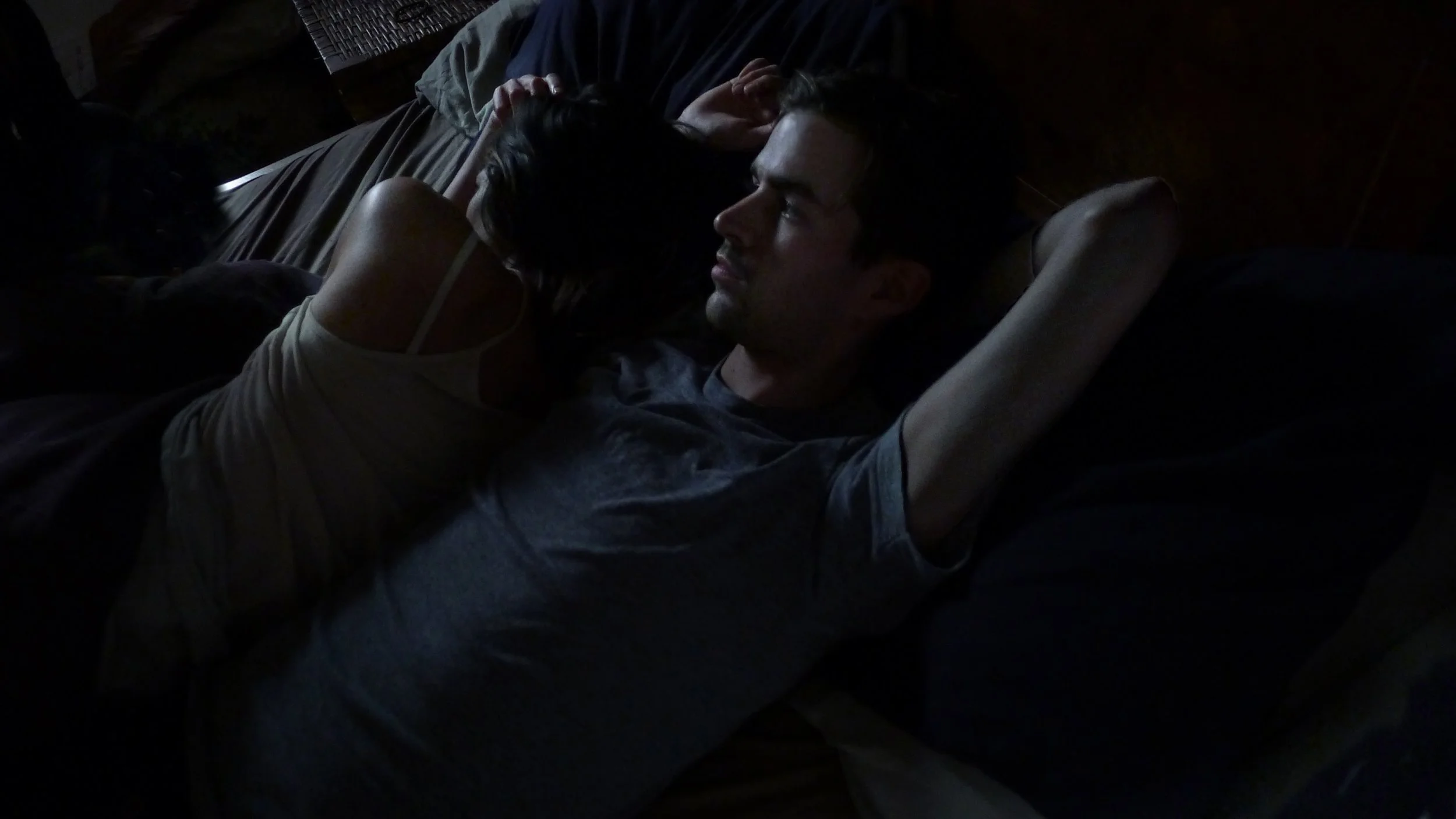
Jacquelyne Mills, Leaves
2013, Canada, 5mins
ปี 2556, แคนาดา, 5 นาที -

Armand Tufenkian, Robert Schaller, Curt Heiner, in lightning Agnes
2014, USA, 2min
ปี 2557, สหรัฐอเมริกา, 2 นาที
-

Apichatpong Weerasethakul, Video Diary: Haiku, 2009
2017, Thailand, 2mins
ปี 2560, ประเทศไทย, 2 นาที -

Kaori Oda, Tune
2018, Japan, 6mins
ปี 2561, ประเทศญี่ปุ่น, 6 นาที -

Courtney Stephens, Iris Season
2020, USA, 3mins
ปี 2563, สหรัฐอเมริกา, 3 นาที
Part 2 : What Lies Beneath: Notes from Underground
Curated by Josh Siegel, Curator, The Museum of Modern Art
CINEMA FOR ALL PAVILION AT BAN MAE MA SCHOOL
ที่โรงเรียนบ้านแม่มะ
PART 2
JANUARY 16TH, 2024 - FEBRUARY 9TH, 2024
“What Lies Beneath: Notes from Underground”
Georges Méliès, The Infernal Cake Walk,
1903, France, 3mins ปี 2446, ประเทศฝรั่งเศส, 3 นาที
GW Bitzer, Interior N.Y. Subway, 14th Street to 42nd Street,
1905, USA, 4mins ปี 2448, สหรัฐอเมริกา, 4 นาที
Ub Iwerks, Hell’s Bells
1929, USA, 6mins ปี 2472, สหรัฐอเมริกา, 6 นาที
Dave Fleischer and Willard Bowsky, Minnie the Moocher
1932, USA, 8mins ปี 2475, สหรัฐอเมริกา, 8 นาที
Jan Svankmayer, The Ossuary
1970, Czechoslovakia, 10mins ปี 2513, เช็กโกสลอวาเกีย, 10 นาที
Apichatpong Weerasethakul, Empire
2010, Thailand, 1min ปี 2553, ประเทศไทย, 1 นาที
Kiro Russo, Juku
2011, Bolivia, 18mins ปี 2554, โบลิเวีย, 18 นาที
Kevin Everson, Sound That
2014, USA, 12mins ปี 2557, สหรัฐอเมริกา, 12 นาที
Clément Cogitore, sans titre
2014, France, 24min ปี 2557, ฝรั่งเศส, 24 นาที
Graeme Arnfield, Colossal Cave
2016, UK, 11mins ปี 2559, สหราชอาณาจักร, 11 นาที
Alia Syed, On a Wing and a Prayer
2016, UK, 19mins ปี 2559, สหราชอาณาจักร, 19 นาที
Sofia Bohdanowicz and Melanie Scheiner, Soft Space
2018, Canada, 4mins ปี 2561, แคนาดา, 4 นาที
Joaquin Cociña and Cristóbal León, Los Huesos
2021, Chile, 14mins ปี 2564, ชิลี, 14 นาที
Kaori Oda, Gama
2023, Japan, 53mins ปี 2566, ประเทศญี่ปุ่น, 53 นาที
-
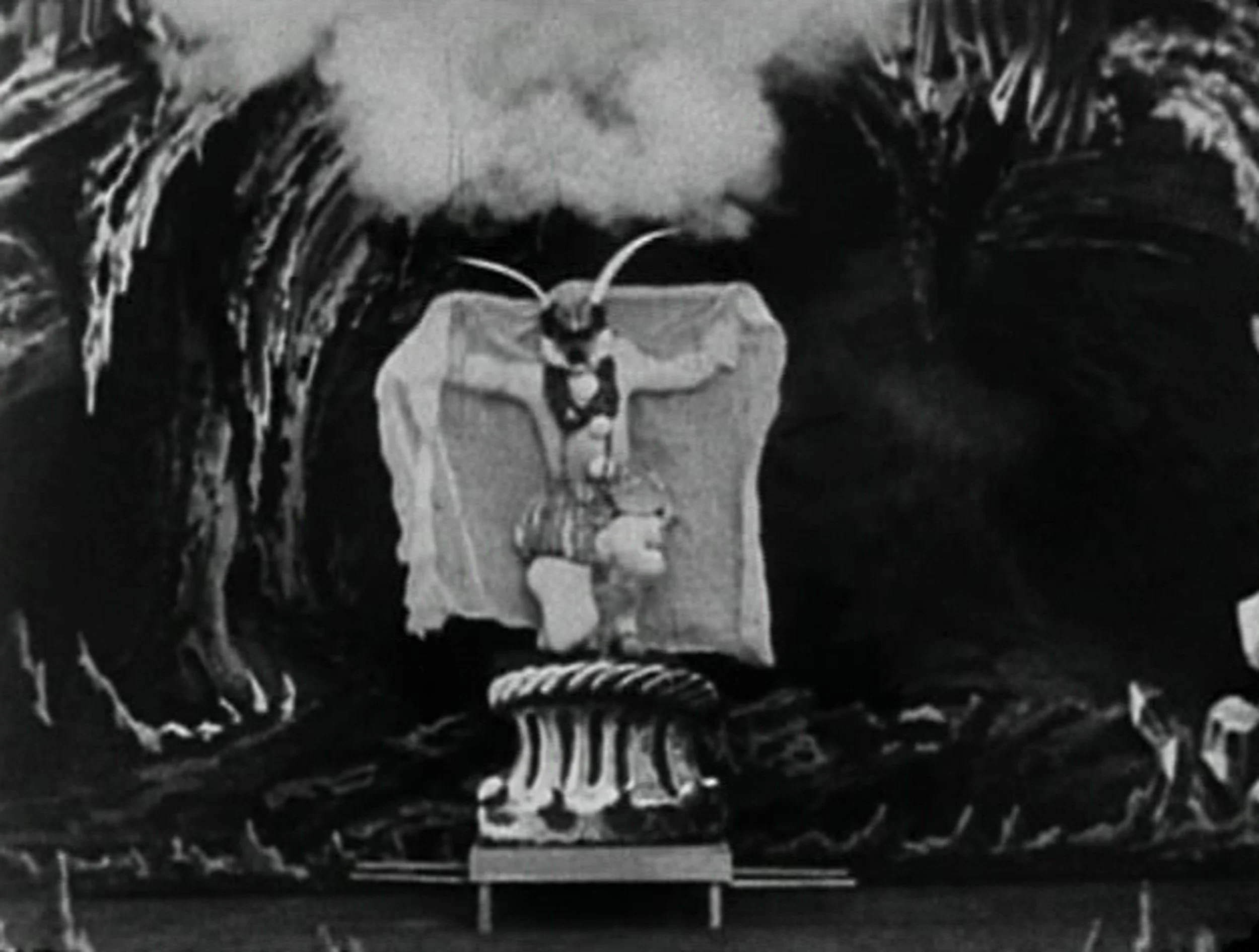
Georges Méliès, The Infernal Cake Walk
1903, France, 3mins
ปี 2446, ประเทศฝรั่งเศส, 3 นาที -

GW Bitzer, Interior N.Y. Subway, 14th Street to 42nd Street
1905, USA, 4mins
ปี 2448, สหรัฐอเมริกา, 4 นาที -

Ub Iwerks, Hell’s Bells
1929, USA, 6mins
ปี 2472, สหรัฐอเมริกา, 6 นาที
-
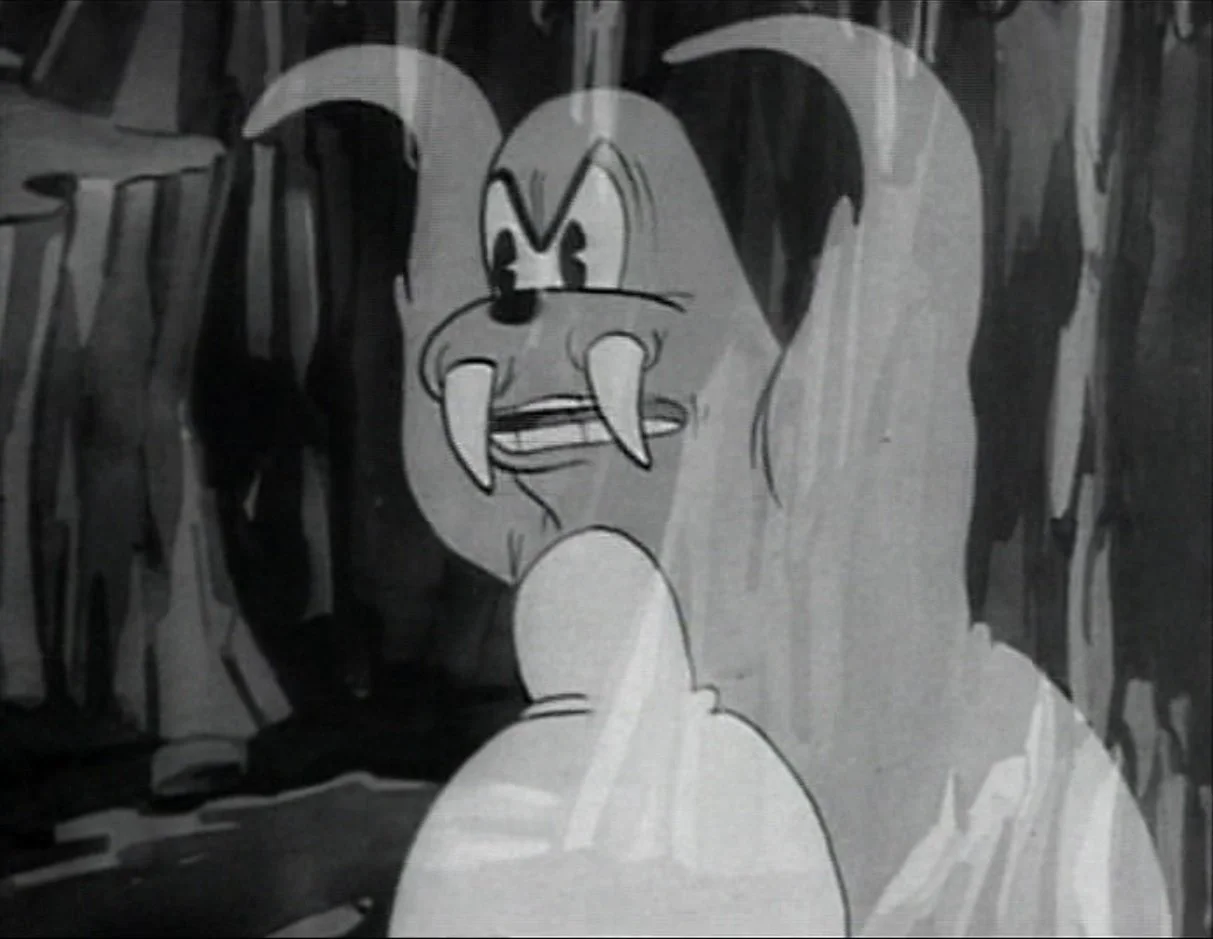
Dave Fleischer and Willard Bowsky, Minnie the Moocher
1932, USA, 8mins
ปี 2475, สหรัฐอเมริกา, 8 นาที -

Jan Svankmayer, The Ossuary
1970, Czechoslovakia, 10mins
ปี 2513, เช็กโกสลอวาเกีย, 10 นาที -

Apichatpong Weerasethakul, Empire
2010, Thailand, 1min
ปี 2553, ประเทศไทย, 1 นาที
-
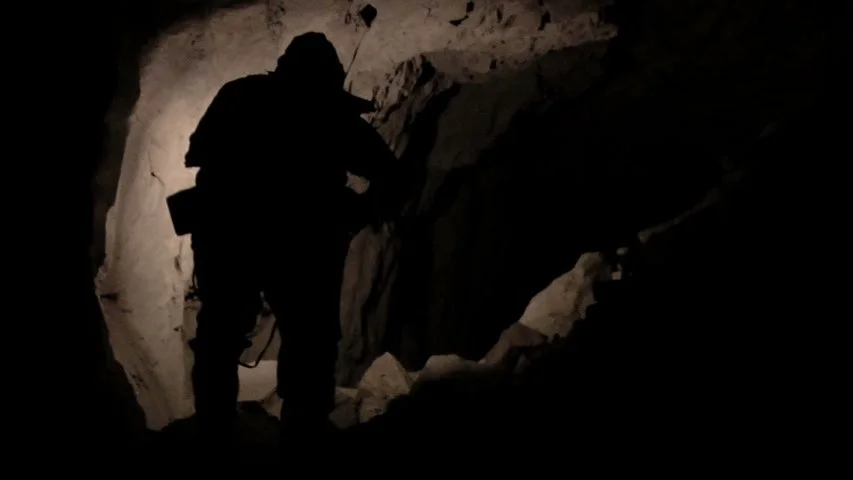
Kiro Russo, Juku
2011, Bolivia, 18 minutes
ปี 2554, โบลิเวีย, 18 นาที -
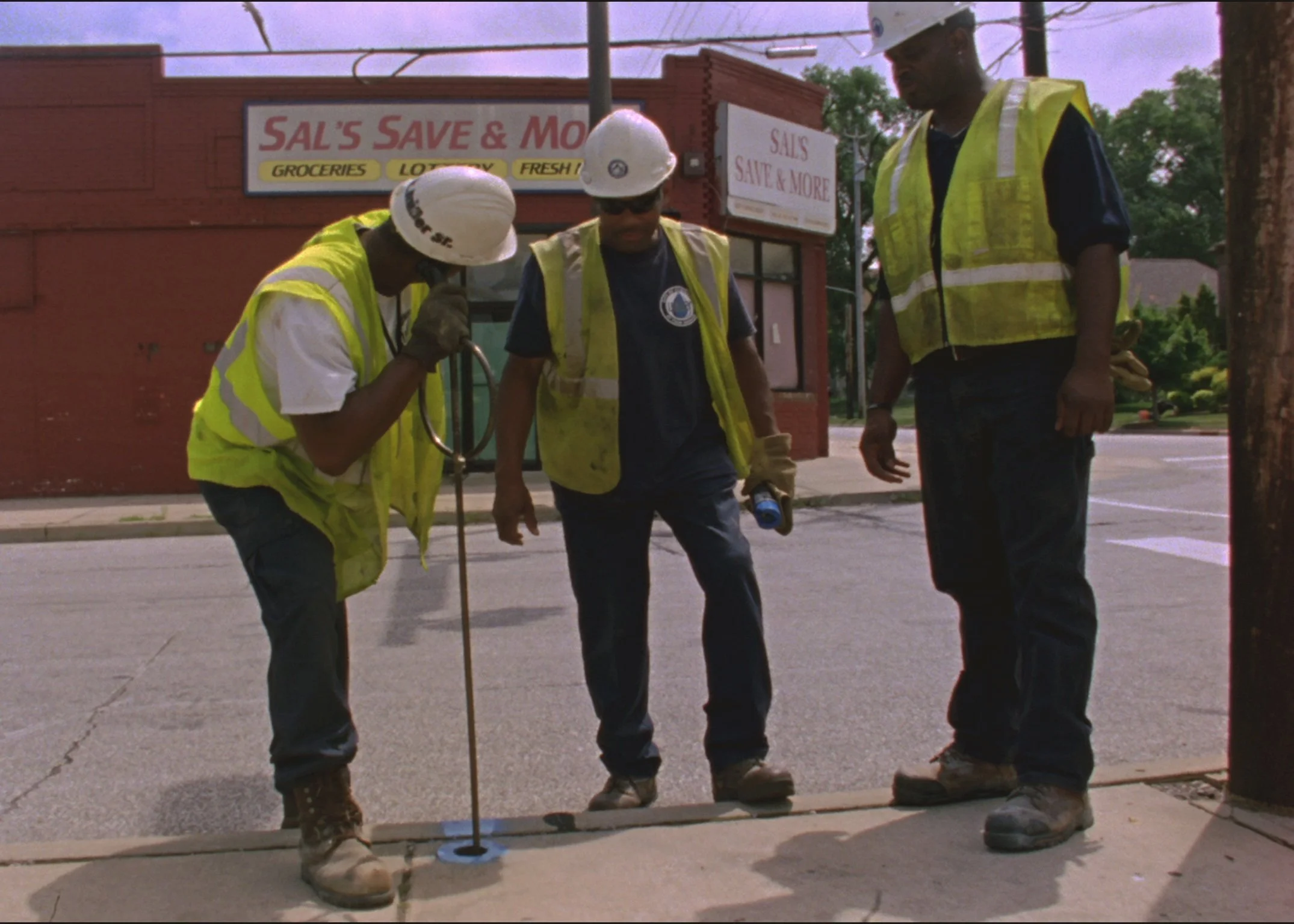
Kevin Everson, Sound That
2014, USA, 12mins
ปี 2557, สหรัฐอเมริกา, 12 นาที -

Clément Cogitore, sans titre
2014, France, 24min
ปี 2557, ฝรั่งเศส, 24 นาที
-

Graeme Arnfield, Colossal Cave
2016, UK, 11mins
ปี 2559, สหราชอาณาจักร, 11 นาที -

Alia Syed, On a Wing and a Prayer
2016, UK, 19mins
ปี 2559, สหราชอาณาจักร, 19 นาที -
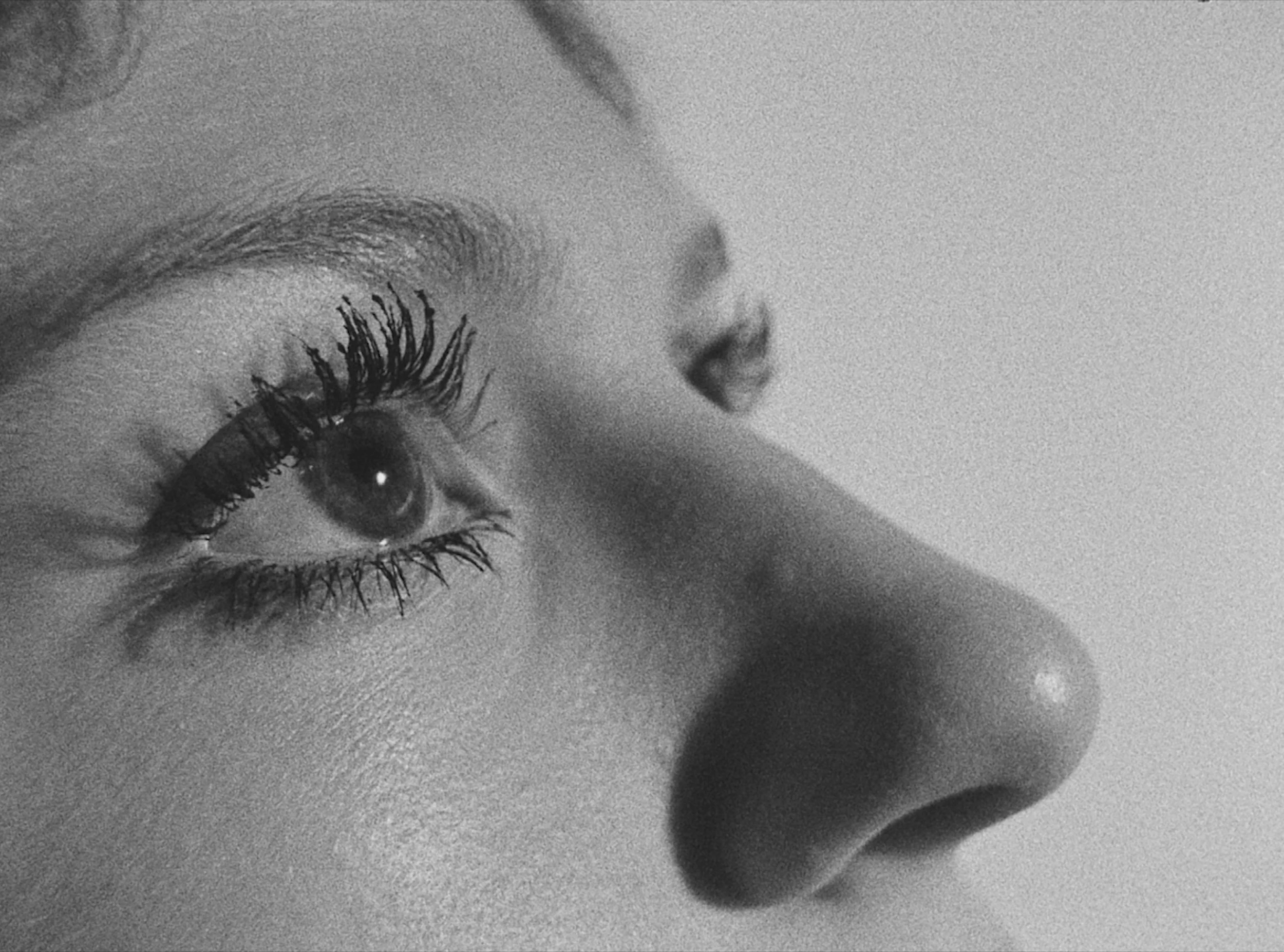
Sofia Bohdanowicz and Melanie Scheiner, Soft Space
2018, Canada, 4mins
ปี 2561, แคนาดา, 4 นาที
-

Joaquin Cociña and Cristóbal León, Los Huesos
2021, Chile, 14mins
ปี 2564, ชิลี, 14 นาที -

Kaori Oda, Gama
2023, Japan, 53mins
ปี 2566, ประเทศญี่ปุ่น, 53 นาที
Part 1 : In the Classroom
Curated by Josh Siegel, Curator, The Museum of Modern Art
CINEMA FOR ALL PAVILION AT BAN MAEMA SCHOOL
ที่โรงเรียนบ้านแม่มะ
PART 1
DECEMBER 10TH, 2023 - JANUARY 8TH, 2024
“In the Classroom”
Peter Nestler, Aufsätze
1963, West Germany, 10 minutes ปี 2506, ประเทศเยอรมนีตะวันตก, 10 นาที
Abbas Kiarostami, Case No. 1, Case No. 2
1979, Iran, 48 minutes ปี 2522, ประเทศอิหร่าน, 48 นาที
The Sudanese Film Group, Arba’a Marat Lil Atfal (Four Times For Children)
1979, Sudan, 20 minutes ปี 2522, ประเทศซูดาน, 20 นาที
Jean-Marie Straub and Danièle Huillet, En rachâchant
1982, France, 7 minutes ปี 2525, ประเทศฝรั่งเศส, 7 นาที
Kent Monkman, Sisters and Brothers
2015, Canada, 3 minutes ปี 2558, ประเทศแคนาดา, 3 นาที
Jessica Sarah Rinland, The Flight of an Ostrich (Schools Interior)
2016, UK, 3 minutes ปี 2559, สหราชอาณาจักร, 3 นาที
Jeamin Cha, Almost One
2018, South Korea, 28 minutes ปี 2561, ประเทศเกาหลีใต้, 28 นาที
.
In the Classroom
Josh Siegel, Curator, The Museum of Modern Art
You are watching these films in a classroom. Once upon a time, presumably, a group of students sat in your place, in tidy rows of desks facing a blackboard, either obediently or even rapturously hanging onto their teacher’s every word, or otherwise allowing their minds to wander to the world outside, to the bright beckoning sun or the pitter-pattering sound of raindrops on the trees. Or perhaps they looked inwardly, to the grumbling in their stomachs for want of lunch, or to their excited, nervous feelings of hope after a boy or girl sitting nearby stole a secret glance and showed them some spark of romantic interest. The classroom, then, is a cosmos unto itself, and in these films, it contains many meanings and feelings.
For the great Iranian writer and director Abbas Kiarostami, the classroom was the place to which he constantly returned throughout his career. The short films he made before 1979 for Kanoon, the Iranian government agency dedicated to educating children and young adults, were enchanting in their observations of innocence and experience, of play and knowledge. But as we see in First Case, Second Case, a pseudo-documentary made in the spring of 1979–only months after the Islamic revolution, and banned immediately thereafter–Kiarostami’s early films were also barbed metaphors for the corruption, abuse, and stifling conformism that had led to this precipitous, dangerous moment in Iran’s history, an unsettling depiction of friends turning on friends, and of the very consequential choice between loyalty to one’s own country, one’s own family, and one’s own conscience.
Similarly, in Peter Nestler’s portrait of a village school in the Swiss Alps, Aufsätze (1963), we hear children in voiceover reading freely and unselfconsciously about their own daydreams and daily lives, not yet molded by a strict Swiss education system that would lead them into becoming upright–and unthinking–model citizens. Meanwhile, beneath the subversive comedy of the French author Marguerite Duras’ 1971 short story “Ah! Ernesto!,” about a precocious and determined nine-year-old boy—a story that is the inspiration for Straub and Huillet’s 1982 film En rachâchant–lies a terse and tough rejection of all forms of authority, whether family, school, or nation.
By contrast, from the late 1970s until Omar al-Bashir’s military coup of 1989, as myriad religious and political factions waged a seemingly endless civil war in Sudan—a war that continues to rage today—a collective of filmmakers working first within the Ministry of Culture and then more independently of the state banded together to make a series of compelling short subjects, some of them documentary evocations of life during—and despite—wartime. Eltayeb Mahdi’s 1979 film Arba'a Marat Lil Atfal, about a school for children with disabilities, is a particularly poignant example of this.
The contemporary films in this program further such tensions between civility and incivility, conformism and rebellion, the recapturing of fond memories of a lost childhood and the critique of oppressive pedagogies that serve only to humiliate or browbeat children into submission. In the Argentine-British artist Jessica Sarah Rinland’s playfully thoughtful and touching The Flight of an Ostrich (School Interior), from 2016, a shy 8-year-old girl finds communion with a bird she sees in an educational video. Kent Monkman, a Canadian First Nations artist of Cree ancestry, confronts in Sisters and Brothers (2015) the systematic erasure of indigenous traditions and cultures by Canada’s notorious residential school system, a blight on that country’s history for which there has still yet to be adequate reckoning or recompense. Closing the program is Jeamin Cha’s Almost One (2018), an unsettling depiction of an increasingly popular type of classroom in South Korea, the acting and singing academy, where child actors are groomed to become the stars of K-pop bands and Netflix series, yet where we observe these young children committing tiny mutinies of expression and gesture in the face of such willfully delusional cultural pressures. What’s in a classroom? Let’s leave the last word to Pink Floyd’s Another Brick in the Wall: “Hey, teacher, leave them kids alone….”
ในห้องเรียน
จอช ซีเกล, ภัณฑารักษ์, พิพิธภัณฑ์ศิลปะสมัยใหม่ (MoMA)
คุณกำลังชมภาพยนตร์เหล่านี้อยู่ในห้องเรียน กาลครั้งหนึ่ง ดูเหมือนว่าจะเคยมีนักเรียนสักกลุ่มนั่งอยู่ตรงที่ที่คุณนั่งนี้ ตามแถวโต๊ะเรียนหันหน้าเข้าหากระดานดำอย่างเป็นระเบียบ อาจนั่งอยู่อย่างเชื่องเชื่อหรือถึงกับคอยสดับฟังทุกคำพูดที่ออกจากปากครูของพวกเขา หรือไม่เช่นนั้นก็ปล่อยให้ความคิดของพวกเขาลอยล่องไปกับโลกนอกห้องเรียน ไปยังดวงอาทิตย์ที่เชื้อเชิญหรือเสียงเปาะแปะของหยาดฝนบนต้นไม้ หรือบางทีพวกเขาอาจมองเข้าไปยังภายใน ในเสียงคร่ำครวญของกระเพาะจากการรอคอยมื้อเที่ยง หรือในความรู้สึกคาดหวัง ตื่นเต้นปนวิตกกังวลหลังจากเด็กผู้ชายหรือผู้หญิงสักคนที่นั่งใกล้กันแอบเหลือบมองพวกเขาและแสดงถึงความสนใจใคร่รักชั่วแวบหนึ่ง เช่นนี้เอง ห้องเรียนจึงเป็นจักรวาลในตัวมันเอง และในภาพยนตร์เหล่านี้ ห้องเรียนก็กักเก็บความหมายและความรู้สึกมากมายเอาไว้
สำหรับอับบาส เคียรอสตามี (Abbas Kiarostami) นักเขียนและผู้กำกับชาวอิหร่านผู้ยิ่งใหญ่ ห้องเรียนคือสถานที่ที่เขาหวนกลับไปเยี่ยมเยือนหลายต่อหลายครั้งตลอดเส้นทางอาชีพของเขา บรรดาภาพยนตร์สั้นที่เขาถ่ายทำก่อนปีค.ศ. 1979 ให้กับคานูน (Kanoon) องค์กรของรัฐบาลอิหร่านที่จัดตั้งขึ้นเพื่อการศึกษาของเด็กและวัยรุ่น ต่างก็มีเสน่ห์ในแนวทางที่ภาพยนตร์เหล่านี้สังเกตความบริสุทธิ์และประสบการณ์ การละเล่นและความรู้ แต่ก็อย่างที่เราจะเห็นได้ใน First Case, Second Case ภาพยนตร์สารคดีสมมติที่ถ่ายทำในช่วงฤดูใบไม้ผลิปีค.ศ. 1979 – เพียงไม่กี่เดือนหลังจากการปฏิวัติอิสลาม และถูกห้ามฉายทันทีหลังจากนั้น – ภาพยนตร์เรื่องแรกๆ ของเคียรอสตามีเองก็เป็นอุปลักษณ์อันแหลมคมของการคอร์รัปชัน การเหยียดหยามและการคล้อยตามกันจนหายใจไม่ออก อันนำมาสู่ชั่วขณะหน้าสิ่วหน้าขวานแสนอันตรายของประวัติศาสตร์อิหร่านนี้เอง เป็นการเสนอภาพอย่างน่ากลัวของผองเพื่อนที่ทรยศหักหลังกันเอง รวมถึงผลพวงที่ตามมาของการต้องเลือกระหว่างความซื่อตรงต่อประเทศของตนเอง ครอบครัวของตนเองกับจิตสำนึกของตนเอง
ในทางคล้ายคลึงกัน ในโรงเรียนประจำหมู่บ้านบนเทือกเขาแอลป์ที่ปีเตอร์ เนสเลอร์ (Peter Nestler) นำเสนอใน Aufsätze (1963) เราก็ได้ยินเสียงบรรยายของเด็กๆ ขณะกำลังอ่านเกี่ยวกับฝันกลางวันและชีวิตประจำวันของพวกเขาโดยอิสระและไม่รู้ตัว ด้วยยังไม่ถูกหล่อหลอมโดยระบบการศึกษาอันเข้มงวดของสวิตเซอร์แลนด์ที่จะทำให้พวกเขากลายเป็นพลเมืองแบบอย่างที่ทื่อตรง (และไม่รู้จักคิด) ในขณะเดียวกัน ภายใต้อารมณ์ขันอันท้าทายอำนาจในเรื่องสั้น “Ah! Ernesto!” เมื่อปีค.ศ. 1971 ของมาร์เกอริต ดูราส (Marguerite Duras) นักเขียนชาวฝรั่งเศส อันเป็นเรื่องสั้นเกี่ยวกับเด็กชายวัย 9 ขวบที่ฉลาดและยืนหยัดเกินวัย – และเป็นแรงบันดาลใจให้กับภาพยนตร์สั้นปีค.ศ. 1982 เรื่อง En rachâchant ของสเตราบ์ (Jean-Marie Straub) กับฮิวเลต์ (Danièle Huillet) – ภายใต้อารมณ์ขันนี้เราก็เห็นการปฏิเสธอำนาจปกครองทุกรูปแบบอย่างเรียบเฉยและแข็งทื่อ ไม่ว่าจะเป็นครอบครัว โรงเรียนหรือประเทศชาติก็ตาม
ในอีกด้านหนึ่ง ตั้งแต่ช่วงปลายทศวรรษ 1970 ไปจนถึงการรัฐประหารของกองทัพโดยโอมาร์ อัล-บาเชียร์ (Omar al-Bashir) ในปีค.ศ. 1989 ขณะที่บรรดากลุ่มอำนาจศาสนาและการเมืองทำสงครามกลางเมืองกันอย่างไม่มีสิ้นสุดในซูดาน – สงครามที่ยังคงคุกรุ่นอยู่ทุกวันนี้ – กลุ่มศิลปินภาพยนตร์ที่เคยทำงานภายใต้การกำกับดูแลของกระทรวงวัฒนธรรมและหันมาทำงานอย่างเป็นอิสระจากรัฐ ก็ได้รวมตัวกันเพื่อจัดทำสารคดีสั้นๆ ชุดหนึ่งเกี่ยวกับประเด็นน่าสนใจต่างๆ โดยบางส่วนเป็นสารคดีที่บรรยายถึงชีวิตในยามสงคราม (และที่ยืนหยัดแม้ในยามสงคราม) ภาพยนตร์ปีค.ศ. 1979 เรื่อง Arba'a Marat Lil Atfal ของเอลทาเยบ มาฮ์ดิ (Eltayeb Mahdi) เกี่ยวกับโรงเรียนสำหรับเด็กที่มีความพิการ คือตัวอย่างที่ลุ่มลึกเป็นพิเศษเรื่องหนึ่งของภาพยนตร์กลุ่มนี้
ภาพยนตร์ร่วมสมัยในโปรแกรมนี้ขับเน้นแรงตึงเครียดยื้อยุดระหว่างความมีอารยะกับความไร้อารยะ การสยบยอมกับการลุกฮือ การกอบกู้ความทรงจำอันทรงคุณค่าของวัยเด็กที่สูญหายไปกับการวิพากษ์ระบอบการศึกษาที่กดขี่ซึ่งมีบทบาทแค่เพื่อเหยียดหยามหรือบีบบังคับให้เด็กต้องเชื่อฟัง ในภาพยนตร์เรื่อง The Flight of an Ostrich (School Interior) ที่ชวนให้ขบคิดอย่างขี้เล่นและซาบซึ้งจากปีค.ศ. 2016 ของศิลปินชาวอาร์เจนตินา-อังกฤษ เจสสิกา ซาราห์ รินลันด์ (Jessica Sarah Rinland) เด็กสาวขี้อายวัย 8 ขวบผูกมิตรภาพกับนกตัวหนึ่งที่เธอเห็นในวิดีโอสอนหนังสือเรื่องหนึ่ง ใน Sisters and Brothers (2015) เคนท์ มองก์แมน (Kent Monkman) ศิลปินชาวพื้นเมืองในแคนาดาผู้สืบสายเลือดชนเผ่าครี (Cree) ได้ท้าทายการลบเลือนขนบธรรมเนียมและวัฒนธรรมของกลุ่มชาติพันธุ์ชนพื้นถิ่นอย่างเป็นระบบโดยระบอบการศึกษาท้องถิ่นอันเลื่องชื่อของแคนาดา อันเป็นตราบาปในประวัติศาสตร์ของประเทศแห่งนี้ซึ่งยังคงไม่ได้รับการยอมรับและเยียวยาอย่างเพียงพอ เจมิน ชา (Jeamin Cha) ปิดท้ายโปรแกรมด้วย Almost One (2018) ซึ่งนำเสนอภาพอันน่าหวาดวิตกของรูปแบบห้องเรียนที่เริ่มเป็นที่นิยมมากขึ้นเรื่อยๆ ในเกาหลีใต้ นั่นคือสถาบันการแสดงและร้องเพลง ที่ซึ่งบรรดานักแสดงเด็กจะถูกปั้นให้โตไปเป็นดาราประจำวง K-pop และซีรีส์เน็ตฟลิกซ์ แต่ก็เป็นที่ที่เราจะได้เห็นเด็กเหล่านี้กระทำการขัดขืนเล็กๆ น้อยๆ ผ่านการแสดงออกและท่วงท่าต่อหน้าแรงกดดันทางวัฒนธรรมที่หลงผิดอย่างจงใจเช่นนี้ มีอะไรอยู่ในห้องเรียนบ้าง? เราขอทิ้งคำกล่าวสุดท้ายเป็นทำนองของ Pink Floyd ในเพลง Another Brick in the Wall: “Hey, teacher, leave them kids alone…” (เห้ย คุณครู ปล่อยเด็กๆ เขาไปเถอะ)
-

Peter Nestler, Aufsätze
1963, West Germany, 10 minutes
ปี 2506, ประเทศเยอรมนีตะวันตก, 10 นาที -

Abbas Kiarostami, Case No. 1, Case No. 2
1979, Iran, 48 minutes
ปี 2522, ประเทศอิหร่าน, 48 นาที -

The Sudanese Film Group, Arba’a Marat Lil Atfal (Four Times For Children)
1979, Sudan, 20 minutes
ปี 2522, ประเทศซูดาน, 20 นาที
-

Jean-Marie Straub and Danièle Huillet, En rachâchant
1982, France, 7 minutes
ปี 2525, ประเทศฝรั่งเศส, 7 นาที -
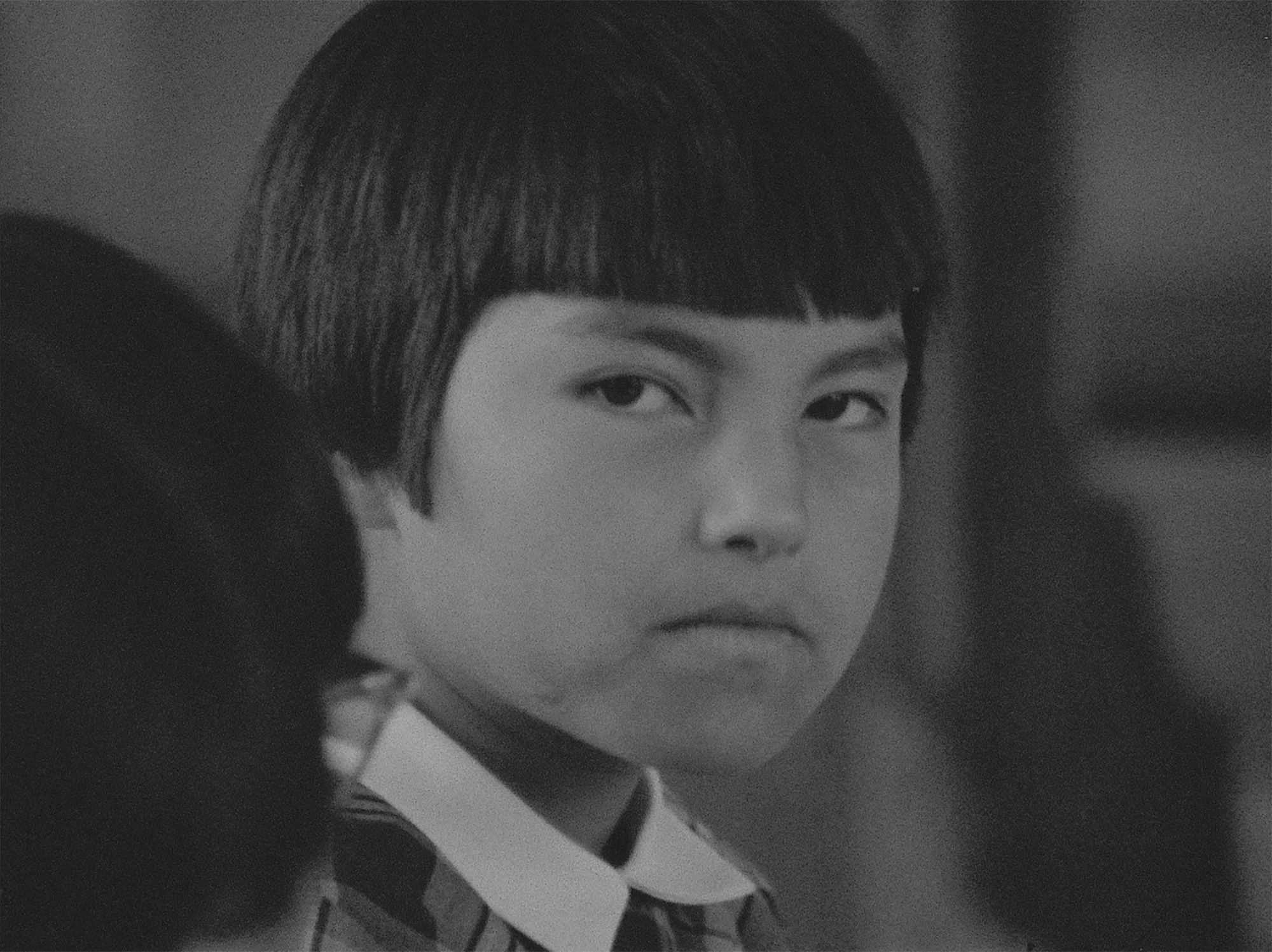
Kent Monkman, Sisters and Brothers
2015, Canada, 3 minutes
ปี 2558, ประเทศแคนาดา, 3 นาที -

Jessica Sarah Rinland, The Flight of an Ostrich (Schools Interior)
2016, UK, 3 minutes
ปี 2559, สหราชอาณาจักร, 3 นาที
-

Jeamin Cha, Almost One
2018, South Korea, 28 minutes
ปี 2561, ประเทศเกาหลีใต้, 28 นาที

